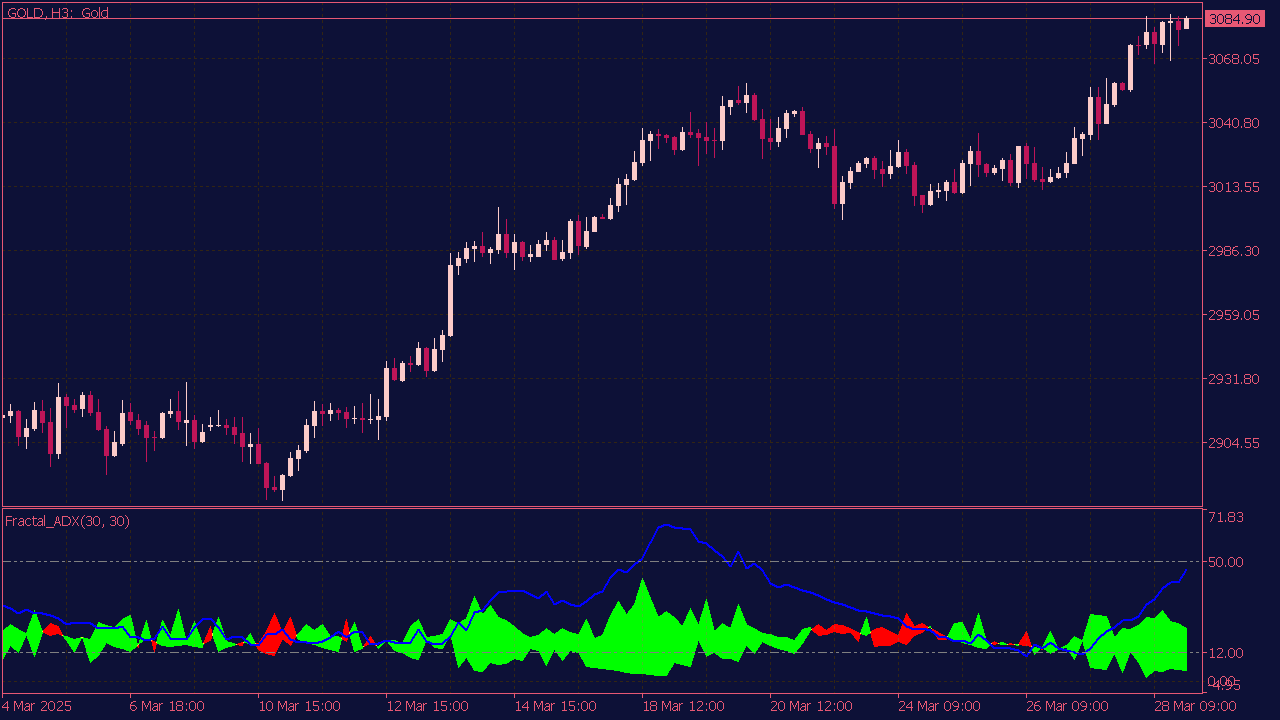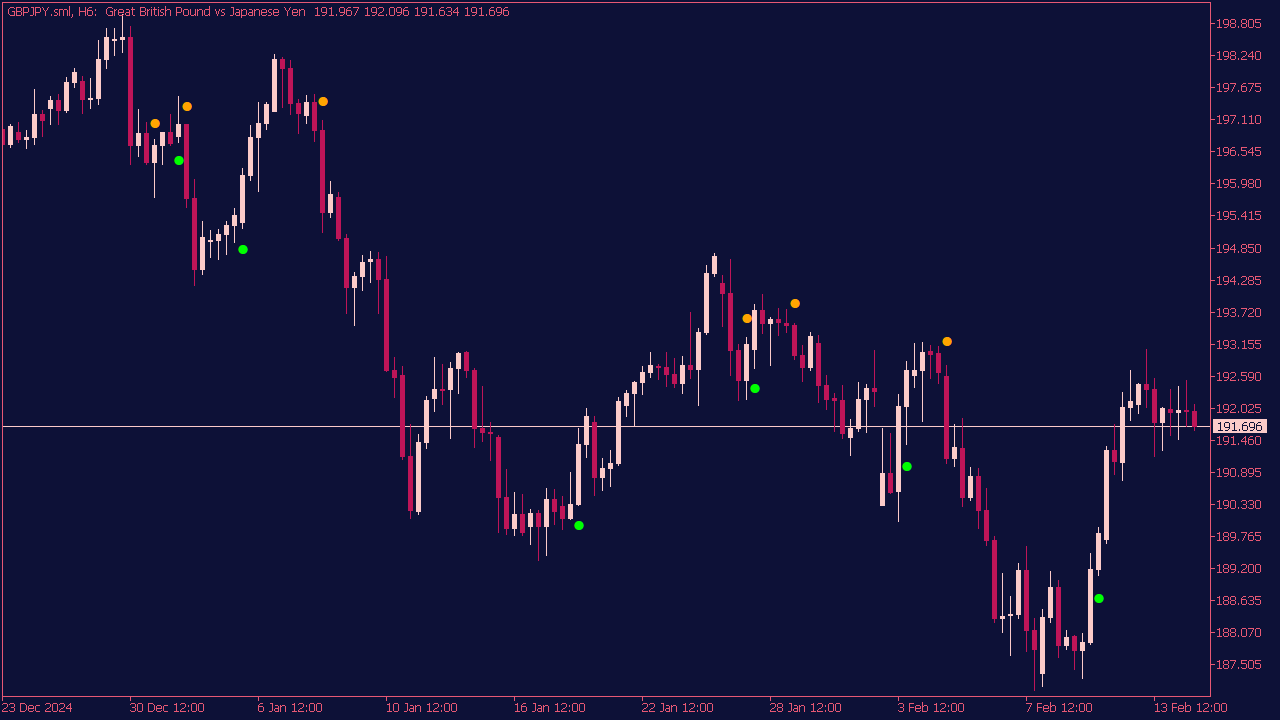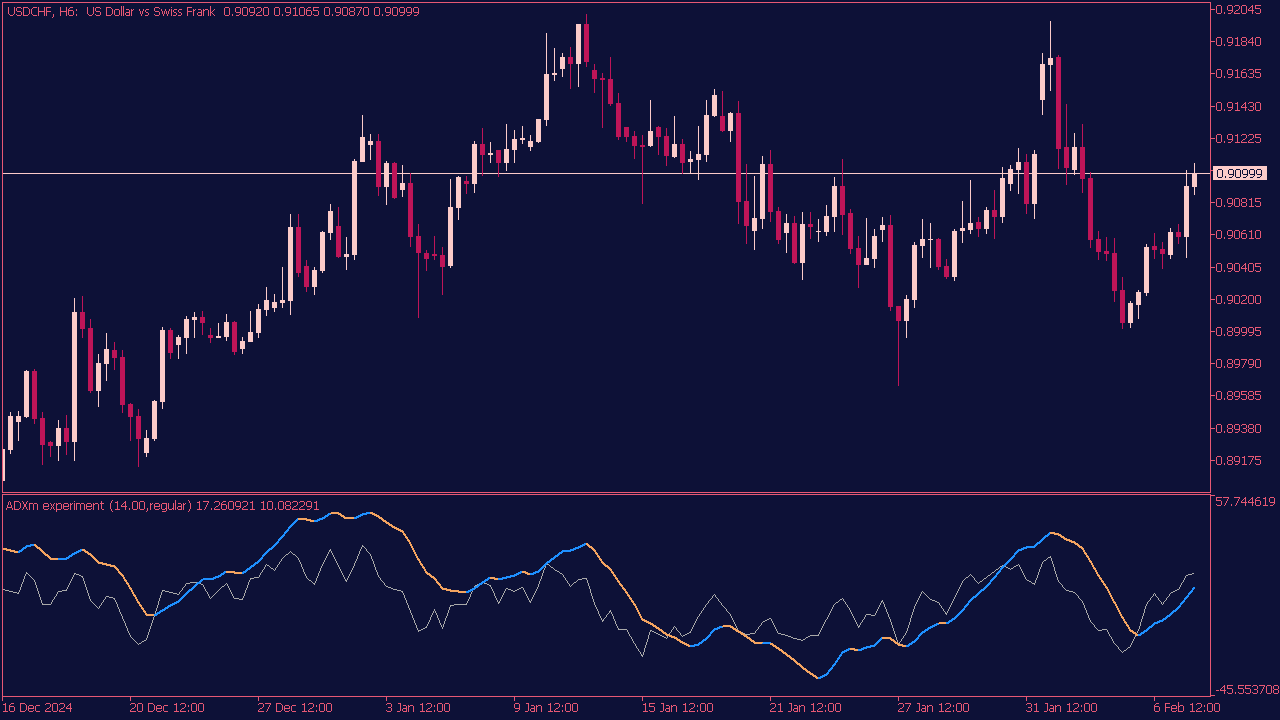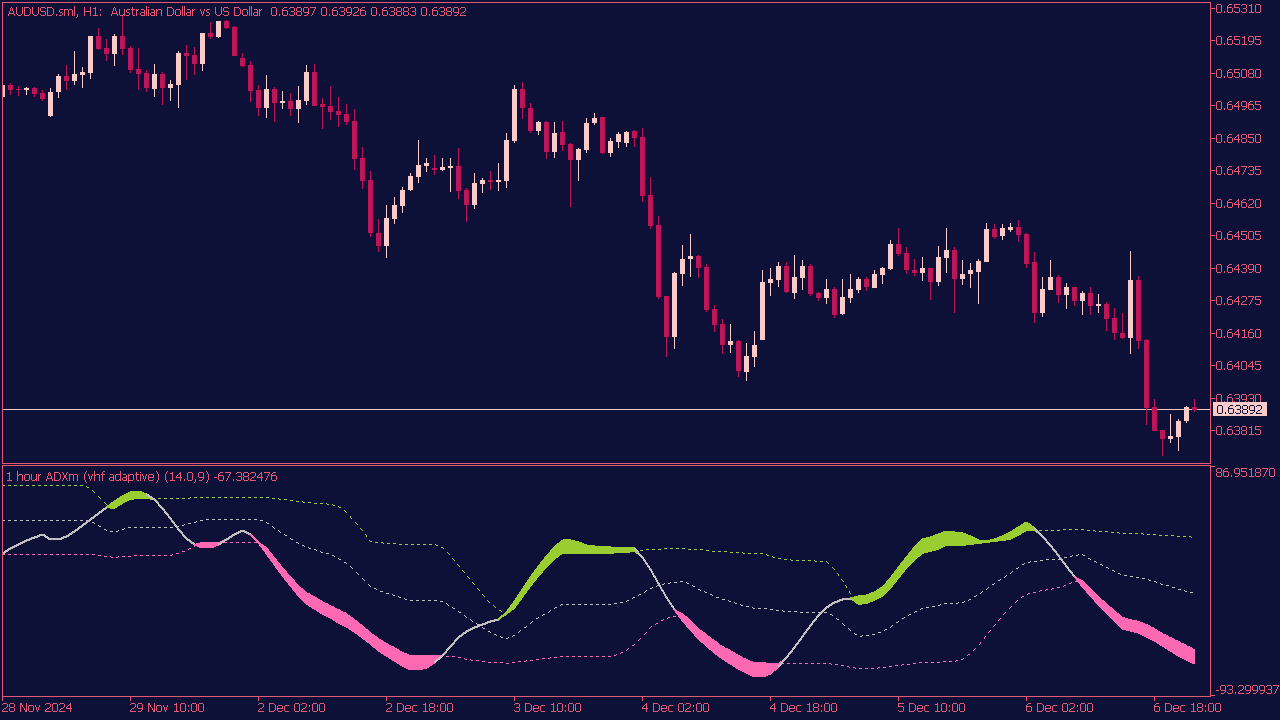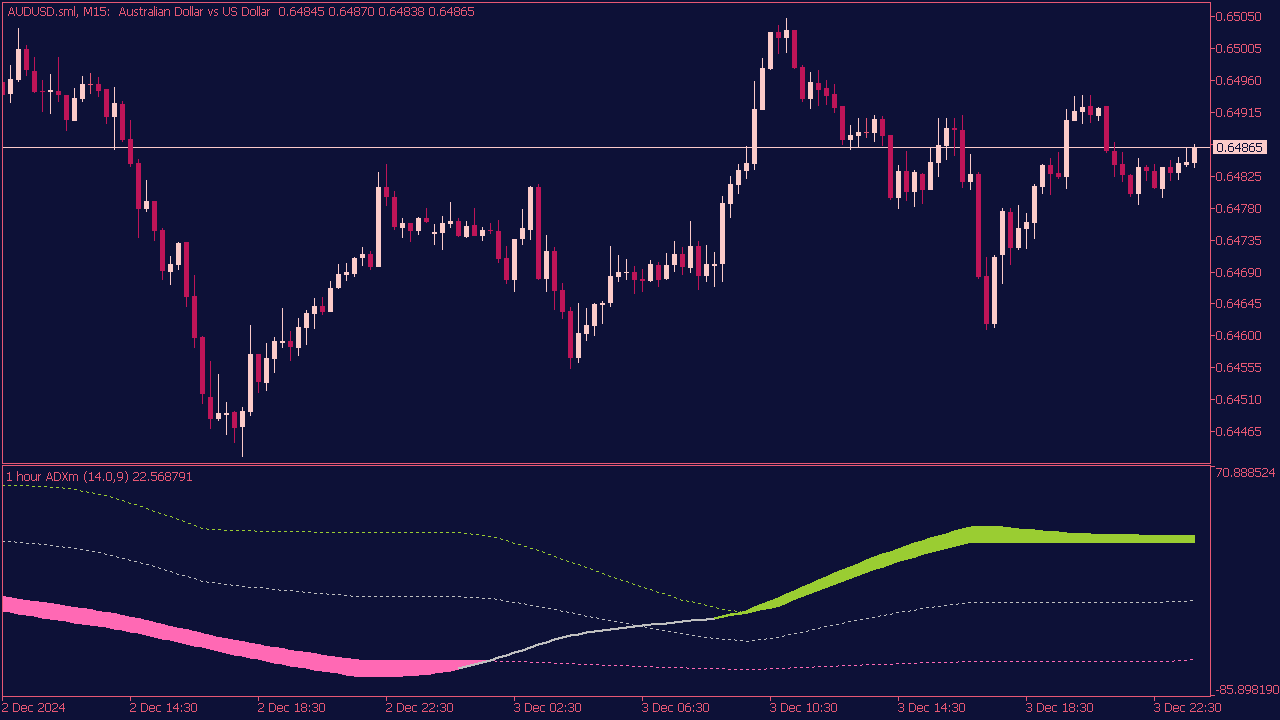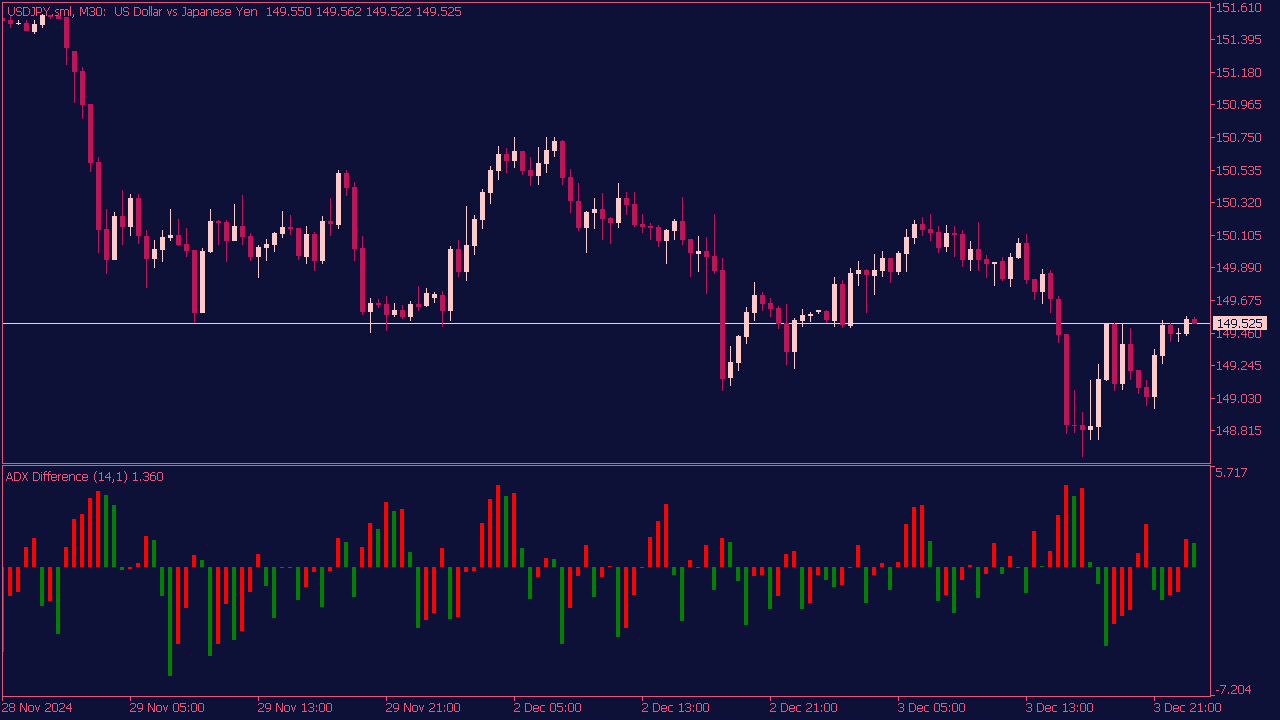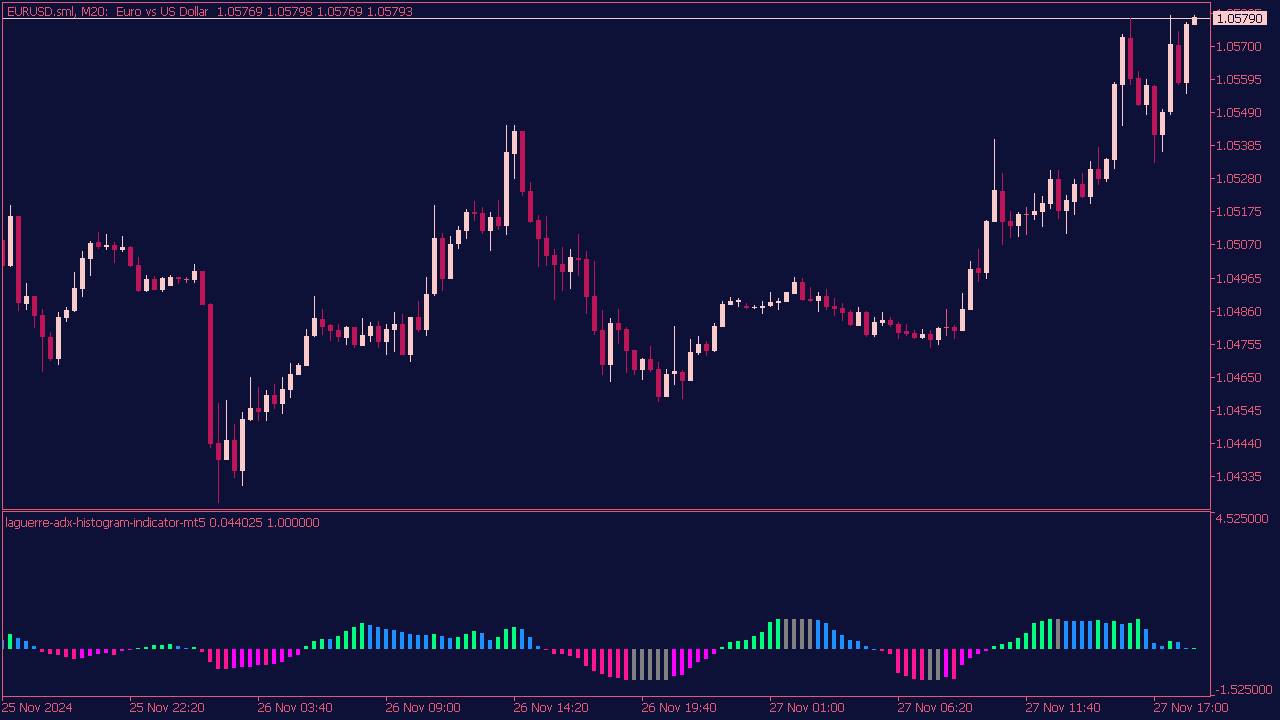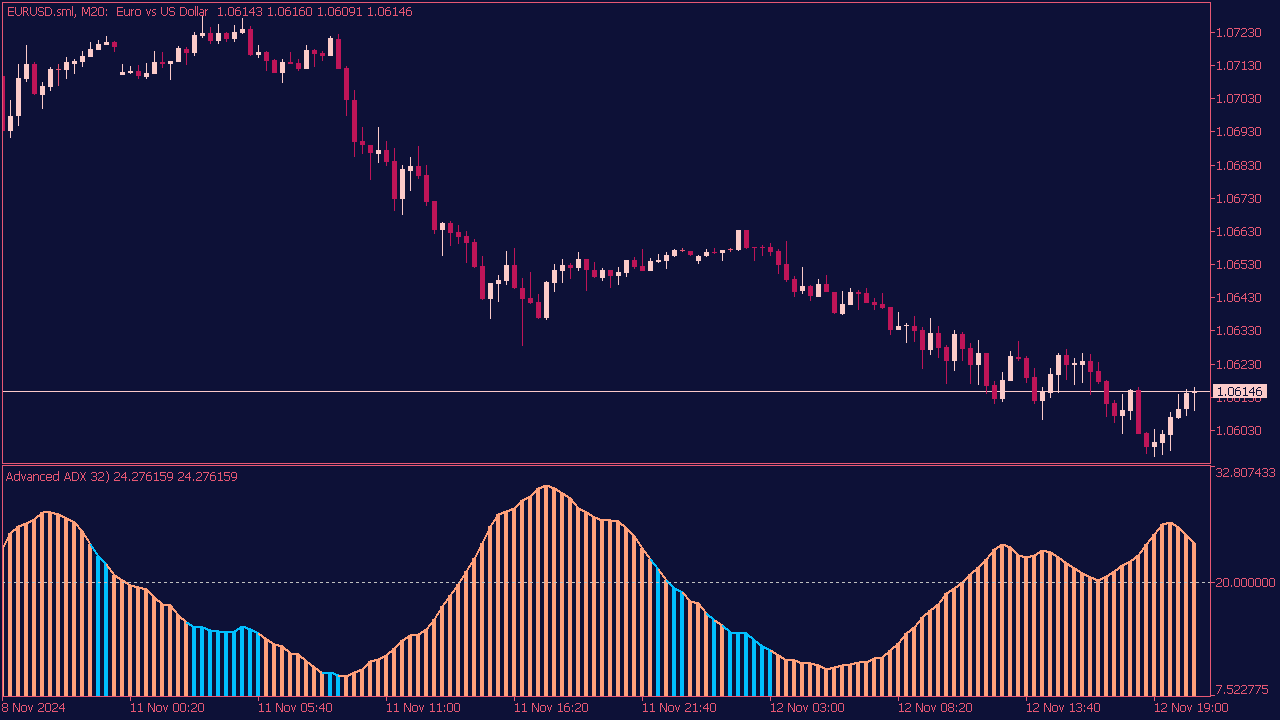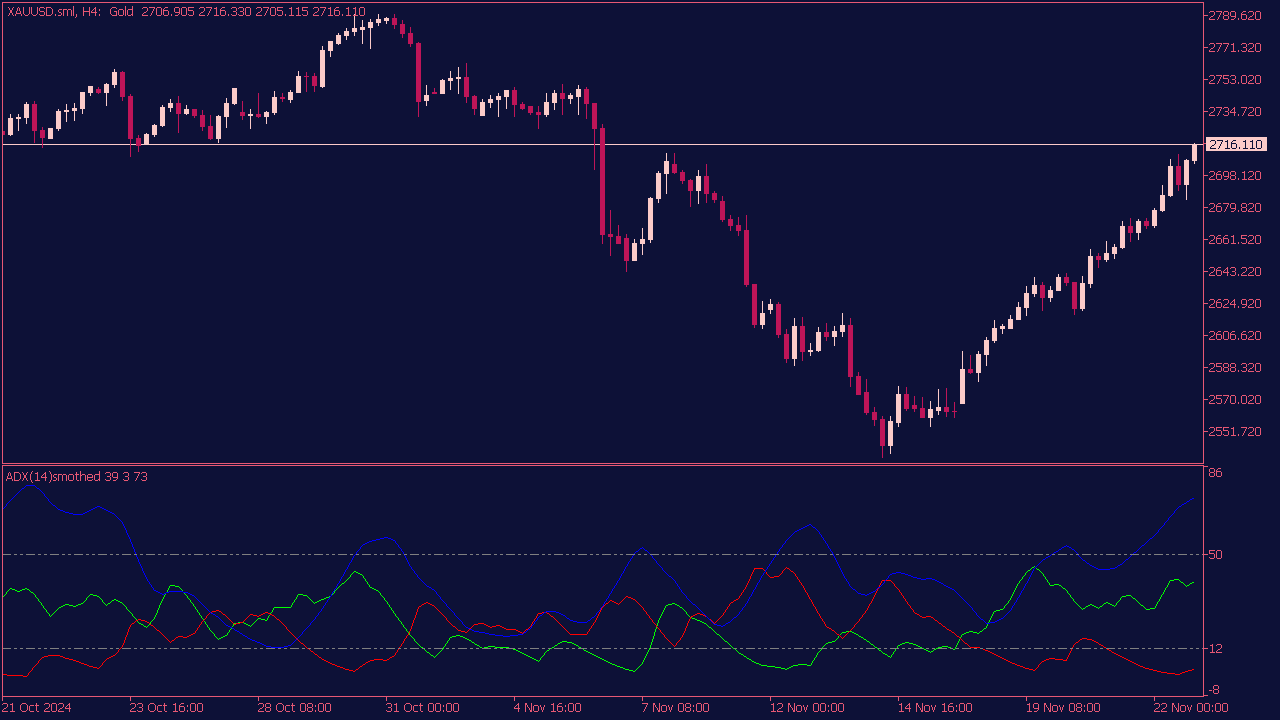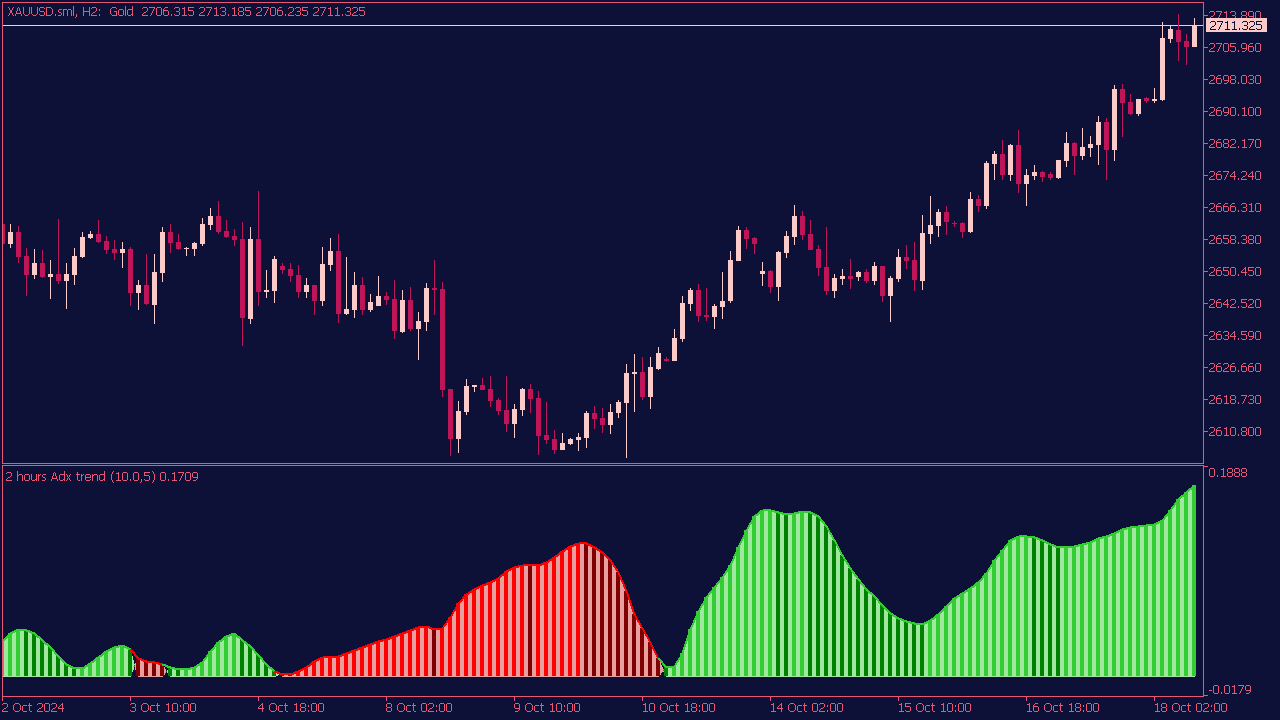ADX Wilder Indicator
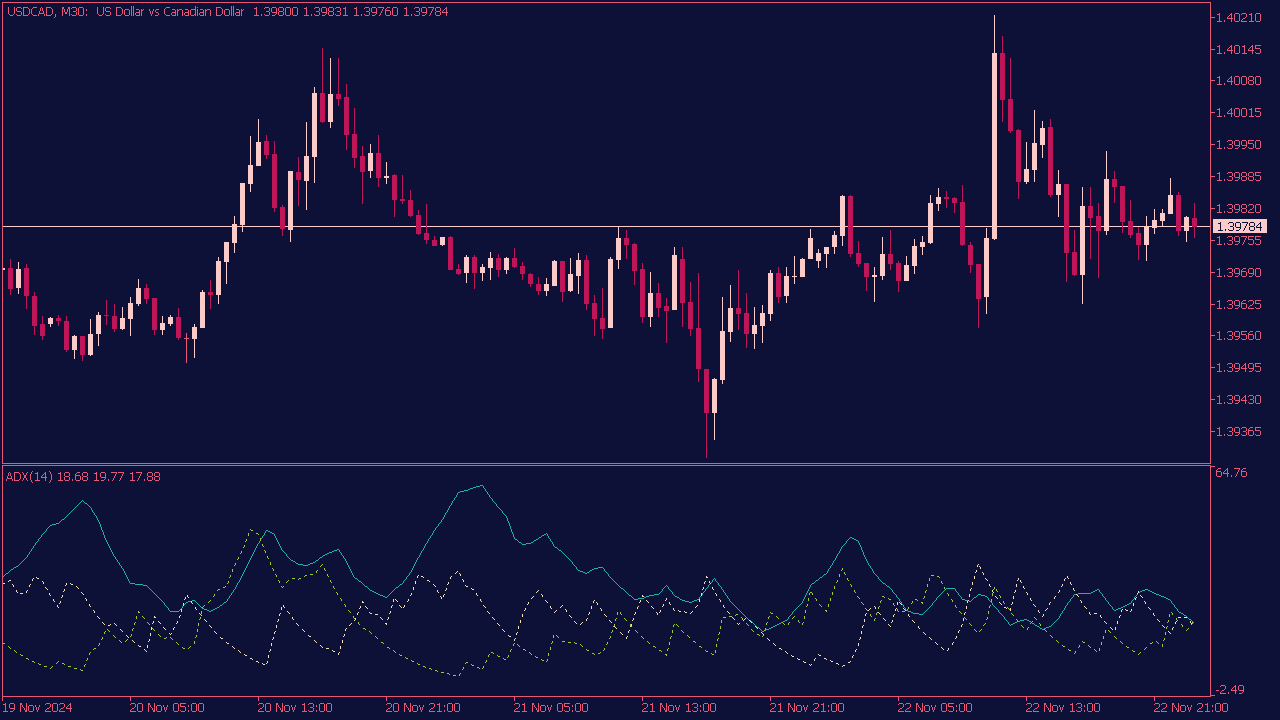
The Average Directional Index (ADX) by J. Welles Wilder is used to measure the strength of a trend, not its direction. Entry points can be identified by combining the ADX with the Plus DI (+DI) and Minus DI (-DI) indicators. A common strategy is to look for entry points when the +DI crosses above the -DI while the ADX is above 20, indicating a strong upward trend. Conversely, if the -DI crosses above the +DI while the ADX is above 20, it may signal a downtrend entry point. Traders typically wait for a confirmation candle to enhance the reliability of the signal before entering a trade.



